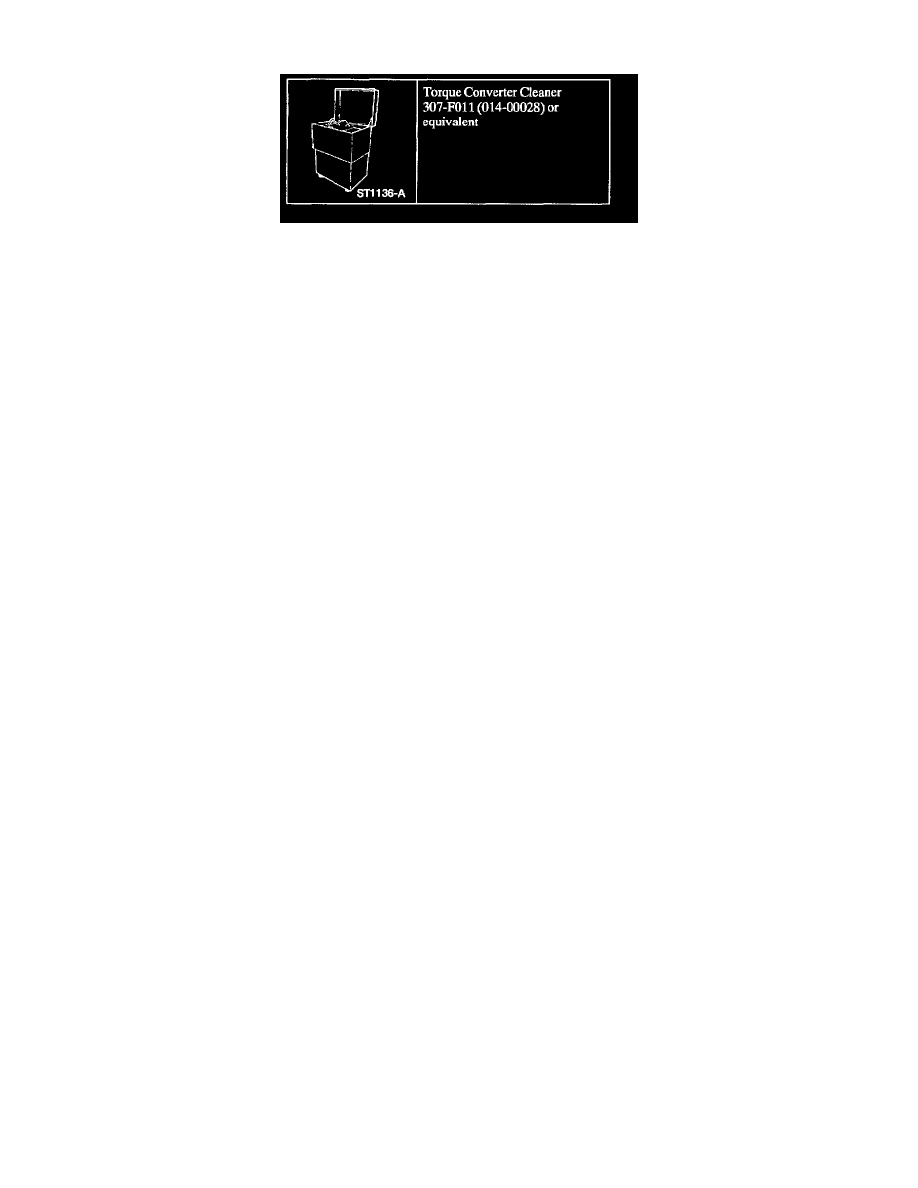Ranger 4WD V6-245 4.0L VIN X SFI (1999)

Transmission Cooler: Service and Repair
CAUTION: Whenever a transmission has been disassembled to replace worn or damaged parts or because the valve body sticks from
foreign material, the transmission fluid cooler must be cleaned using the Torque Converter/Fluid Cooler Cleaner. Under no circumstances
should torque converters be cleaned by hand agitation with solvent.
When internal wear or damage has occurred in the transmission, metal particles, clutch plate material, or band material may have been
carried into the transmission cooler. These contaminants are it major cause of reoccurring transmission concerns and must be removed from
the system before the transmission is put back into service.
1. Conduct backflushing with a Torque Converter/Transmission Fluid Cooler Cleaner. Test the equipment to make sure that a vigorous fluid flow is
present before proceeding. Replace the system filter if flow is weak or contaminated.
2. To aid in attaching the cleaner to the transmission steel cooler lines, connect two additional rubber hoses to the transmission end of the steel
transmission cooler lines.
^
Connect the cleaner tank pressure line to the steel transmission cooler return line (longest line).
^
Connect a tank return hose to the steel transmission cooler pressure line (shorter line). Place the outlet end of this hose in the solvent tank
reservoir.
3. Turn on solvent pump and allow the solvent to circulate a minimum of 5 minutes (cycling switch on and off will help dislodge contaminants in
cooler system).
4. Switch off the solvent pump and disconnect the solvent pressure hose from the transmission cooler return line.
5. Use compressed air to blow out the cooler(s) and lines (blow air into the transmission cooler return line) until all solvent is removed.
6. Remove the rubber return hose from the remaining steel cooler line.
